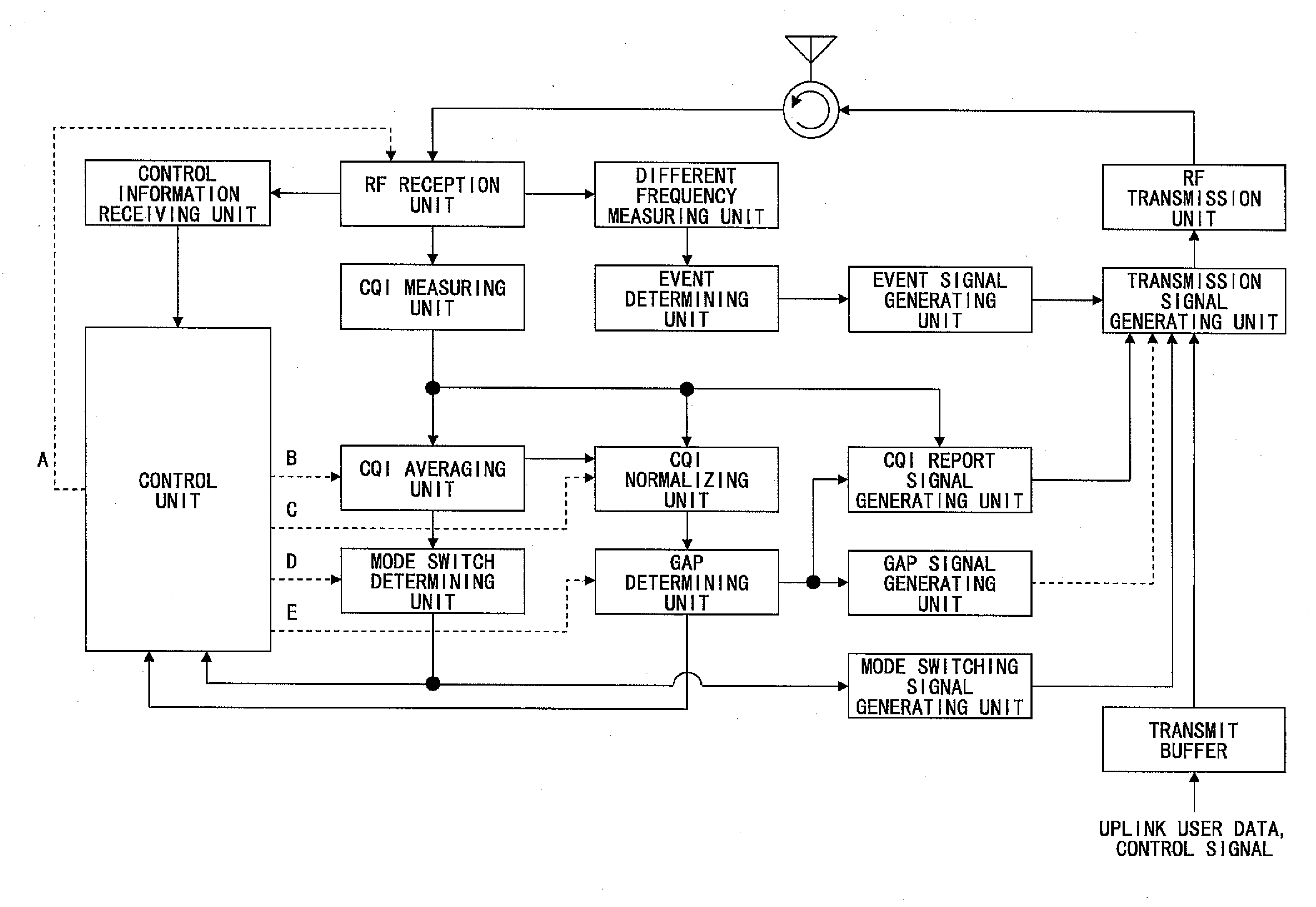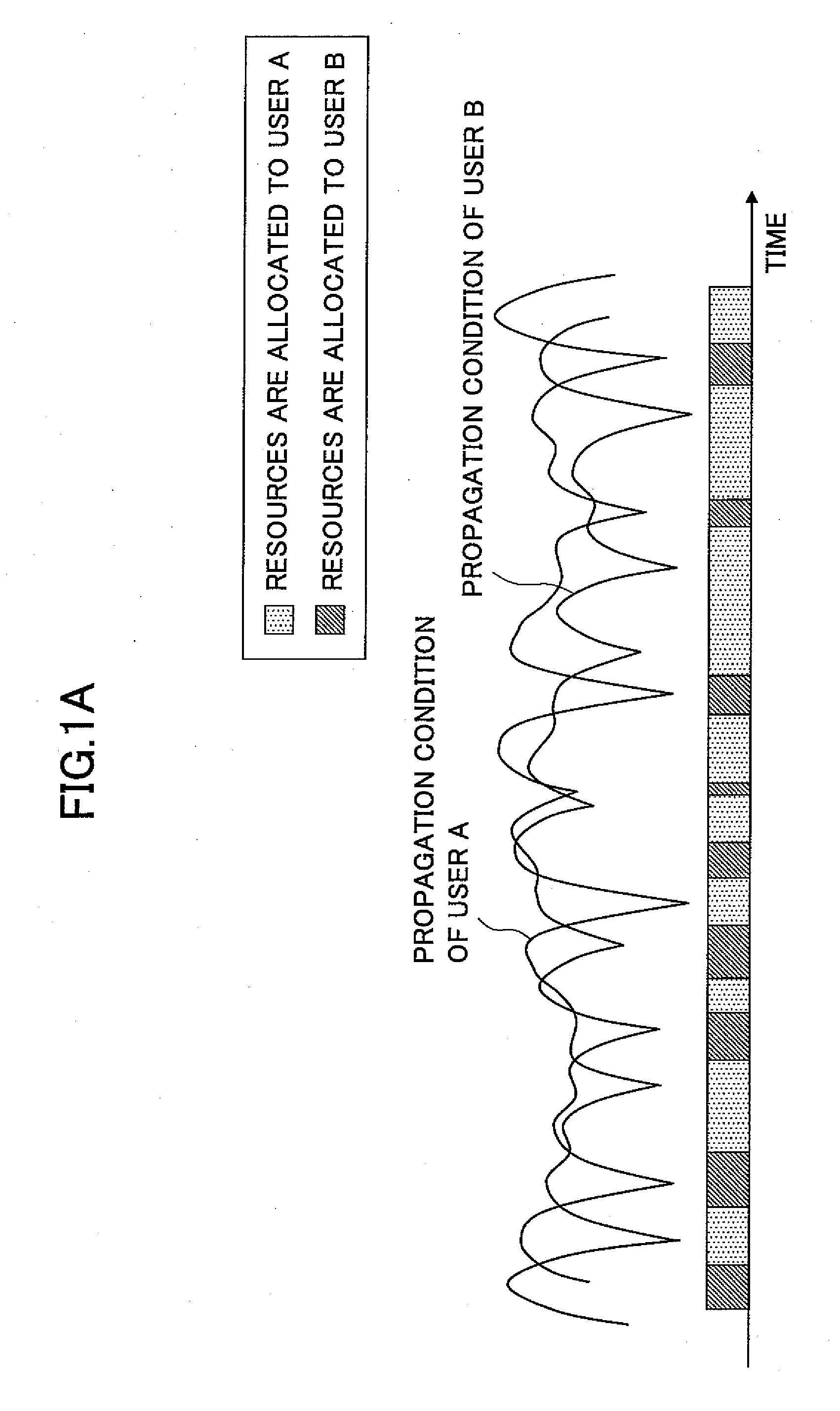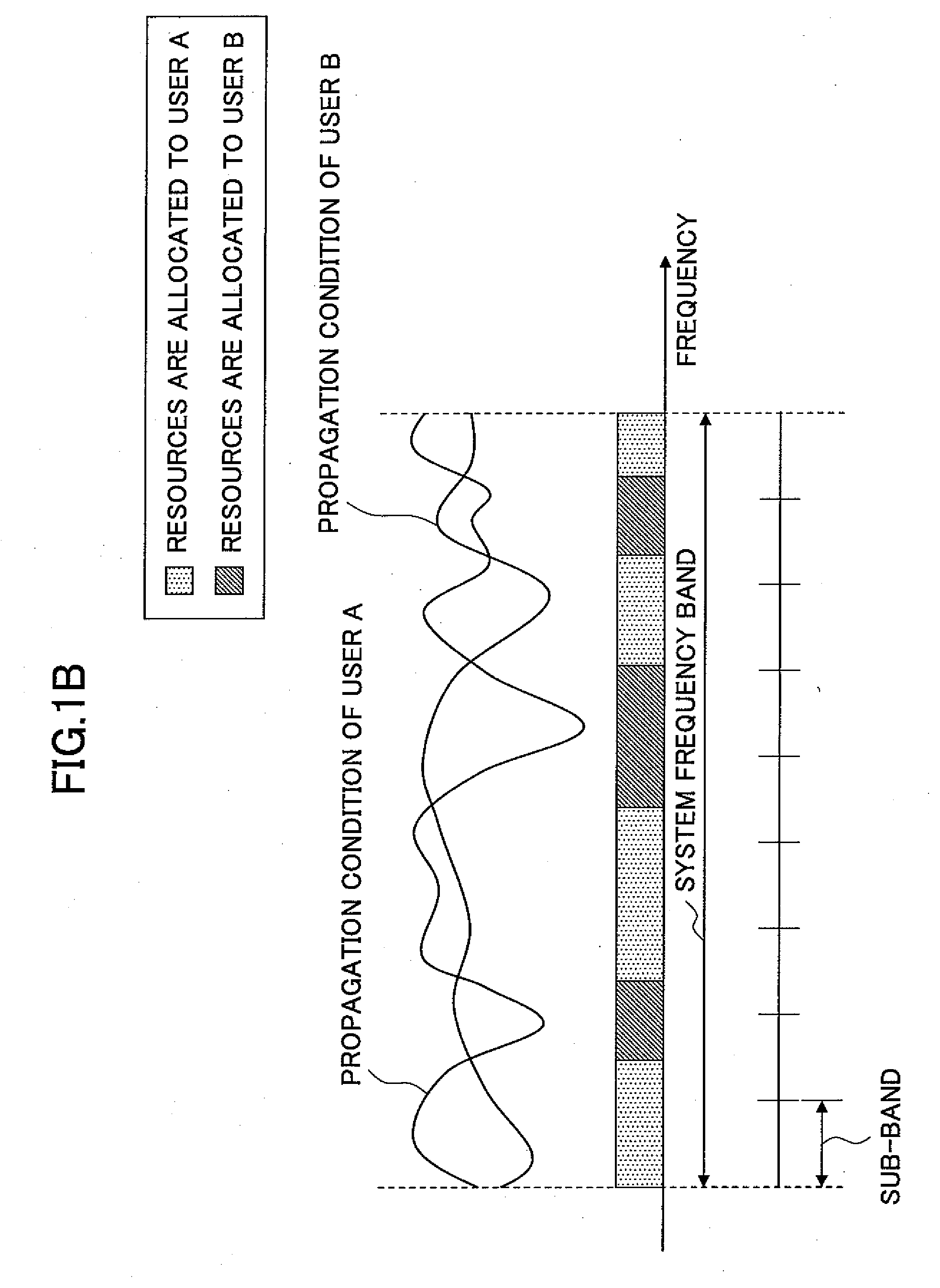Mobile station, base station, and method
a mobile station and base station technology, applied in the field of wireless communication technologies, can solve the problems of increasing the size, price and power consumption of mobile stations, increasing the interference power of other communications, and wasting precious radio resources, so as to solve or reduce one or more problems, and efficiently transmit data.
- Summary
- Abstract
- Description
- Claims
- Application Information
AI Technical Summary
Benefits of technology
Problems solved by technology
Method used
Image
Examples
first embodiment
[0035]As described above, one object of the present invention is to improve data transmission efficiency in a wireless communication system where a mobile station operating in a frequency performs discontinuous reception to be able to search for neighboring cells with different frequencies.
[0036]For this objective, it is preferable to use a mean value of radio channel quality indicators (CQIs) measured by the mobile station (user equipment). The mobile station operates in the regular mode while the mean value is higher than a threshold, and operates in the measurement mode (irregular mode) while the mean value is lower than the threshold. The switch between the regular mode and the measurement mode is performed autonomously by the mobile station based on a switching threshold reported from the base station, for example, as broadcast information. In the regular mode, because propagation conditions are good on average, the mobile station does not measure channel quality of different f...
second embodiment
[0085]During a gap period, the mobile station is tuned to a different frequency and system and cannot measure the CQI of the current serving system. Therefore, if the unit gap period is repeated too many times, the number of times CQIs are not reported to the base station may become excessive, and it may become difficult for the base station to properly recognize the status of the mobile station. In addition, when a gap is created to suspend current downlink communications, it often happens that uplink communications are also affected by the gap. This is because a mobile station normally includes only one local oscillator used for both uplink and downlink communications. Accordingly, when the mobile station is tuned to a different frequency and system for downlink communications, it is unable to tune to the current serving system even for uplink communications, and is therefore not able to transmit uplink data. Thus, transmission of uplink data may be delayed. This problem may be fa...
third embodiment
[0093]In many normal mobile stations, received user data are temporarily stored in a receive buffer for retransmission based on hybrid automatic repeat request (ARQ) or parallel stop-and-wait ARQ, or until the reception of a logical block (packet) interpretable by an upper layer protocol is completed. Also, there is a case where received user data are buffered to guarantee in-sequence delivery for an upper layer protocol. For an upper layer protocol, it is preferable that a meaningful logical block is received as quickly as possible. Also, retransmission data for hybrid ARQ are preferably received as quickly as possible in order to reduce delay. Accordingly, if gaps are created without taking into account the status of a receive buffer, downlink transmission characteristics may be degraded.
[0094]FIG. 7 shows a mobile station according to an embodiment of the present invention. Below, overlapping descriptions of components already described in the above embodiments are omitted. The m...
PUM
 Login to View More
Login to View More Abstract
Description
Claims
Application Information
 Login to View More
Login to View More - R&D
- Intellectual Property
- Life Sciences
- Materials
- Tech Scout
- Unparalleled Data Quality
- Higher Quality Content
- 60% Fewer Hallucinations
Browse by: Latest US Patents, China's latest patents, Technical Efficacy Thesaurus, Application Domain, Technology Topic, Popular Technical Reports.
© 2025 PatSnap. All rights reserved.Legal|Privacy policy|Modern Slavery Act Transparency Statement|Sitemap|About US| Contact US: help@patsnap.com



